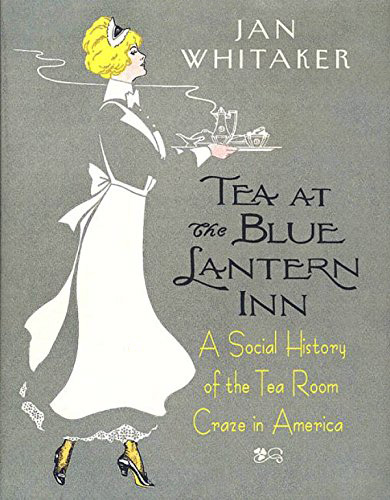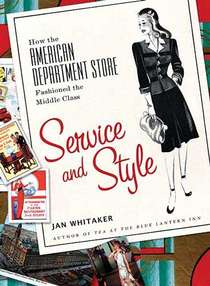 In the late 19th and early 20th centuries, the sight of women drinking in public brought up the same kind of issues about women’s status in society as did the struggle to get the vote. According to deep-seated beliefs about gender roles that had been forged in the 19th century, the proper realms for women were church and home.
In the late 19th and early 20th centuries, the sight of women drinking in public brought up the same kind of issues about women’s status in society as did the struggle to get the vote. According to deep-seated beliefs about gender roles that had been forged in the 19th century, the proper realms for women were church and home.
Engaging in politics and drinking alcohol were definitely not approved of for women, particularly women of the middle and upper classes.
But in the late 19th century the prevailing gender rules seemed to be threatened, especially in New York City where “fashionable” women were drinking in public view in first-class restaurants such as Delmonico’s and the Brunswick Hotel. “No Longer a Sly Nip,” reported the New York Herald in 1894, stating that women who used to conceal their drinking with “cocktail opera glasses” and “creme de menthe fans” now were brazenly drinking openly, even at daytime shopping lunches. “Is this an evidence of the so-called ‘emancipation of women?’” the writer asked.
 The supposed wickedness of wealthy New York women would become a popular topic in succeeding decades. Stories indulged an interest in the doings of privileged women of fashion and at the same time allowed readers to feel morally superior.
The supposed wickedness of wealthy New York women would become a popular topic in succeeding decades. Stories indulged an interest in the doings of privileged women of fashion and at the same time allowed readers to feel morally superior.
Opposition to women drinking grew stronger. In 1901 the Women’s Christian Temperance Union (W.C.T.U.) declared a crusade against women drinking in restaurants. New York president Ella Boole made an in-person survey of New York restaurants with a reporter from the Sunday World, who concluded that women’s “range of tipples is identical with that of men, and include the cocktails, the ‘Scotch highball,’ the sherry cobbler, absinthe and liqueurs. They drink at luncheon, at dinner, at supper, and frequently in between times.” According to the story, drinking went on in public restaurants and cafes, hotel table d’hotes, and just about anywhere.
Taking an inventory of women drinking in public spread. The pastor of a Congregational church in Chicago led a tour where his group tallied 269 “boozing women” out of a total of 463 women encountered in restaurants.
But even more alarming to the anti-drinking forces than the fact that “women of high grade and their imitators” drank liquor was the fact that they did it in public restaurants – and no one seemed to care! Where was the outrage, the shame? The head of the Daughter of Temperance thought women who drank “without shame in public places” should be ostracized. Otherwise, she feared, Womanhood, The Home, and The Race were in peril.
There was a lot of sermonizing. Actress Lillian Russell advised women that they would ruin their looks if they drank. But the most interesting observations on the subject came from an experienced New York hotel proprietor (alas, unnamed). Yes, women were drinking in public, he said, but they were freeing themselves from their old bad habits. He named fainting, hysteria, and using opiates like morphine. He found that women rarely got drunk in public, and saw their drinking as a sign that they were becoming more engaged in public life. Over the years, he said, he had witnessed women taking better care of themselves, becoming “healthier and happier,” and growing more companionable with their husbands.
 Not even Prohibition could put an end to women’s drinking. True, it was not observable in public restaurants, but women continued to drink in speakeasies and private homes. By the early 1930s when alcohol again became legal, at least in most cities, it had become perfectly respectable for women to drink in public. Although women were still not welcome to stand at the bar in taverns, it was just fine if they ordered a before-dinner cocktail in a restaurant. What was once a privilege found only among women of the leisure class had become a commonplace custom.
Not even Prohibition could put an end to women’s drinking. True, it was not observable in public restaurants, but women continued to drink in speakeasies and private homes. By the early 1930s when alcohol again became legal, at least in most cities, it had become perfectly respectable for women to drink in public. Although women were still not welcome to stand at the bar in taverns, it was just fine if they ordered a before-dinner cocktail in a restaurant. What was once a privilege found only among women of the leisure class had become a commonplace custom.
© Jan Whitaker, 2020


 It's great to hear from readers and I take time to answer queries. I can't always find what you are looking for, but I do appreciate getting thank yous no matter what the outcome.
It's great to hear from readers and I take time to answer queries. I can't always find what you are looking for, but I do appreciate getting thank yous no matter what the outcome.



My research in Pittsburgh from the early 20th century shows lots of complaints in “liquor court” regarding women drinking in cafes and saloons, especially unescorted women. Singled out for particular criticism were the female “hucksters” from the public market house. They had a particular reputation for drinking like tanks, and even taking over bars.
Thanks for sharing your research. So I see that the dislike of women drinking was not limited to fashionable women of leisure — though I suppose they were expected to adhere to higher standards.
Love it all! The drinking never bothered me–it was the g-d smoking that I hated. Now, Ms. Pollack: Is that in Arcadia’s “Lost Restaurants of….” series? I just sent them (the document by email, the 121 images by snailmail) LOST RESTAURANTS of GREATER MIAMI and have a disclaimer in the Introduction that, if “your” favorite spot was not included, please try to understand that, being limited to 121 images, the choice(s) were not easy.
Yes, I did Lost Restaurants of St. Louis two years ago. This one is Iconic Restaurants____. Since many of the “Lost” were also “Iconic”, it’s something of a challenge. But it’s a lot easier to get photos for this one!
Thanks, Ann. I will ask our editor at Arcadia and The History Press which he wants next. I am America’s senior collector of Miami memorabilia and Floridiana, this coming May beginning my 62nd year of collecting all this junque and our collections in those areas are the largest in private hands in the country, hence the entire book (as with several other of my books) is done from and with material here in The Bramson Archive. I am probably the only person in Greater Miami who can do that. (Not bragging, folks, just making a statement of fact.)
If you’re working with Chad, don’t tell him I’m reading online blogs instead of writing!
Another great piece, Jan. I’m currently researching a woman who was convicted of manslaughter in 1899. After causing another woman’s death either by accident or through criminal negligence (depending on how you look at it,) she dismembered the woman’s corpse and threw the body parts into a pond in a desperate — and unsuccessful — attempt at a cover-up. With the police on her heels, she fled the US for London, where she insisted on staying in a temperance hotel. Sawing up a body didn’t bother her, but staying in a hotel with a bar? That was a no-no.
Marcia, that’s a good one!!
I’m working on my next book about St. Louis restaurants. Culpepper’s original location was closed late in 2019, and in researching a piece on its closing for St. Louis Magazine, discovered that the Board of Aldermen proposed a bill that made it illegal for women to drink while they sat at a bar. An enterprising reporter made the rounds of various watering spots interviewing women – all of whom thought it ridiculous, of course – and one of the spots he visited was Culps. Would pass the link on to you but I can’t find it and am up against deadline.
Fascinating and kind of unbelievable! Thanks, I’ll look for it.
My Gran used to take me to Mary Elizabeth’s or Schraffts so she could have a cocktail with our sandwich’s and I could have hot chocolate…..
Very happy memories….
What on earth is a “sherry cobbler”?
Kind of an orange slurpy with sherry added. Cobblers (drinks) were popular in the 19th century.